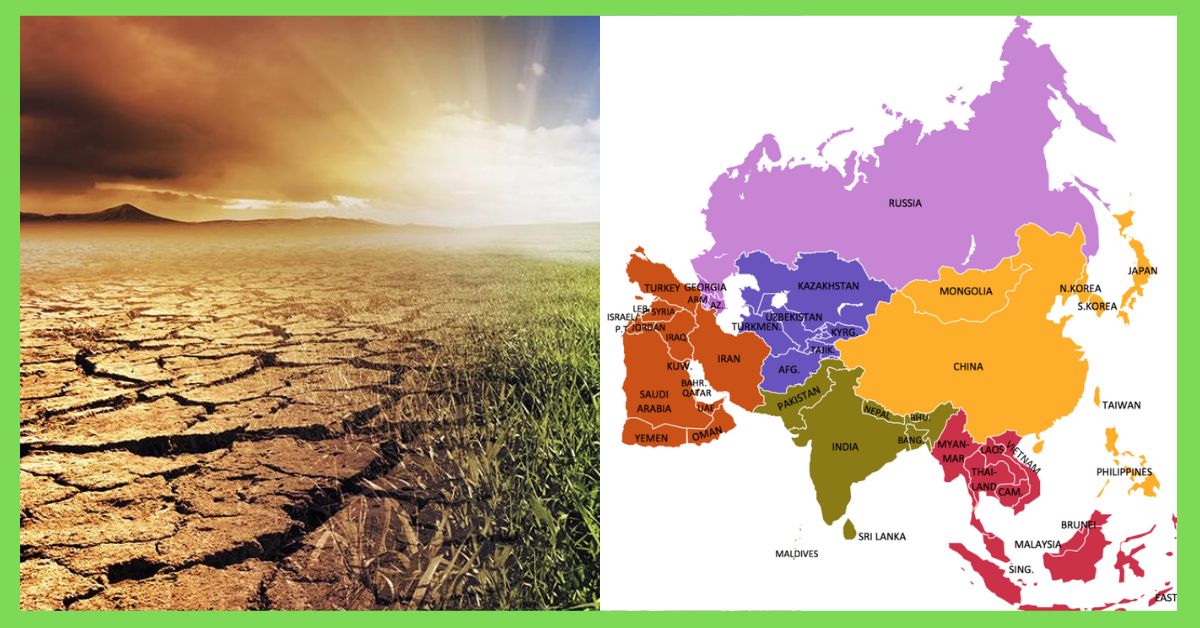Climate Control Strategies in Asia
Asia, a vibrant mix of diverse cultures and landscapes, is facing the challenges of a changing climate. From the towering peaks of the Himalayas to the sun-soaked beaches of the Maldives, the continent grapples with rising temperatures, unpredictable rainfall, and more intense natural disasters. However, Asian nations are not just passive spectators; they are actively weaving a unique tapestry of climate control strategies tailored to the diverse lands they inhabit.
[lwptoc borderColor=”#8224e3″]
A Variety of Solutions
Asia’s climate control strategies are like a blend of old and new, combining ancient wisdom with modern technology. Here’s a look at some key approaches happening across the continent:
Renewable Energy Embrace (India, China, Vietnam): India, a leader in solar power, aims to achieve 500 GW of renewable energy capacity by 2030. China and Vietnam are dotted with wind farms, while hydropower remains crucial in Nepal and Bhutan.
Green Infrastructure Weavers (Singapore and China): Singapore, known as the “Garden City,” embraces vertical gardens and urban forests to combat rising temperatures and improve air quality. China, facing desertification, plants millions of trees annually along the Great Green Wall project.
Sustainable Agriculture Champions (Thailand and Sri Lanka): Thailand promotes integrated rice farming, combining fish and rice cultivation to save water and increase yields. Sri Lanka revitalizes ancient irrigation systems to maximize water efficiency and revive traditional farming practices.
Flood Control Architects (Bangladesh and Indonesia): Bangladesh, with its mighty rivers, builds embankments and cyclone shelters to resist floods. Indonesia implements “desa siaga,” a community-based disaster preparedness program, preparing villages for floods and extreme weather events.

Challenges and Teamwork
While these strategies show promise, the journey to climate control is not without obstacles. Common challenges include:
High costs and infrastructure needs: Transitioning to renewables and building green infrastructure demands significant investments, posing financial challenges for developing nations.
Policy gaps and implementation hiccups: Effective climate action requires robust policies and efficient implementation, which can be hindered by bureaucratic hurdles.
Equity and regional disparities: The impacts of climate change are not evenly distributed, requiring collaborative efforts to ensure vulnerable communities are not left behind.
To address these challenges, Asian nations are increasingly collaborating through initiatives like the Asia-Pacific Climate Change Adaptation Network and the ASEAN Centre for Biodiversity. These platforms facilitate knowledge sharing, resource mobilization, and joint projects, accelerating the region’s climate adaptation efforts.
Glimpses of Progress
Despite challenges, Asia’s climate control efforts are bearing fruit. Renewable energy generation is increasing, with China leading in solar photovoltaics. Green infrastructure projects are enhancing air quality in cities like Delhi and Beijing. Farmers are adopting sustainable practices that boost yields and conserve water.
Public awareness of climate change is growing across Asia, leading to increased demand for cleaner technologies and more responsible consumption. Youth movements like Fridays for Future are mobilizing young people to demand climate action, adding a crucial voice to the movement.
The Journey Ahead
Asia’s path toward climate resilience is ongoing. Refining existing strategies, embracing technological advancements, and fostering regional cooperation are crucial for long-term success. By harmonizing tradition and innovation, Asia can navigate the climate change monsoon and create a future where people and nature thrive together.
Key Takeaways
Asian countries are implementing diverse climate control strategies, including renewable energy adoption, green infrastructure development, sustainable agriculture practices, and flood control measures.
Challenges include high costs, policy gaps, and regional disparities, requiring collaboration and equitable solutions.
Positive results are emerging, with increased renewable energy generation, improved air quality, and adoption of sustainable practices.
Public awareness and youth engagement are growing, creating a positive momentum for climate action.
Looking Beyond Asia
While this article focused on Asian strategies, climate change is a global challenge. Asia’s approaches offer valuable lessons and inspiration for other regions worldwide as we collectively strive to create a more sustainable future.
Remember, the fight against climate change is a joint effort, and only through shared knowledge, collaborative action, and unwavering commitment can we build a resilient planet for all.
I hope this article provided a comprehensive overview of climate control strategies in Asian countries. If you have any questions or suggestions for further exploration, feel free to ask.
Recent Climate – Climate Control Strategies in Asia, Climate Control Strategies, Climate Control Strategies in Asia update
